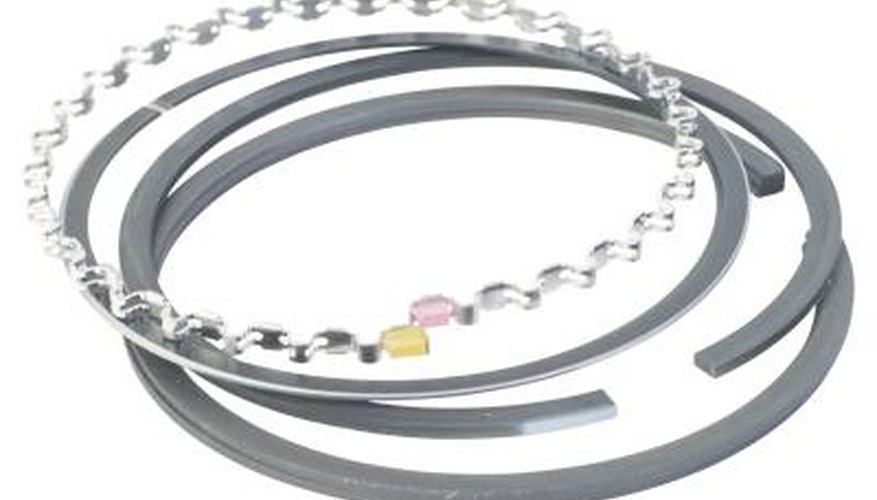The piston rings fit into horizontal grooves in the pistons. The rings expand against the cylinder wall and seal the combustion chamber. This ensures that the engine maintains a consistent level of compression. Stuck piston rings are uncommon, but they do occur. There are two positions in which the rings can get stuck. They can become stuck inside the piston grooves, or they can stick against the cylinder wall.
Seized Engine
If the rings are stuck against the cylinder wall, the crankshaft will not rotate. This condition usually happens when an engine has been sitting for a long time. The rings rust and bond to the cylinder wall. If an engine is seized, it is important to eliminate other causes, such as failed crankshaft bearings, or broken valve-train components, since these can also seize an engine. The typical solution to this condition is to pour penetrating oil into the cylinders. Over a period of days, the oil will usually free the stuck rings.
- If the rings are stuck against the cylinder wall, the crankshaft will not rotate.
- If an engine is seized, it is important to eliminate other causes, such as failed crankshaft bearings, or broken valve-train components, since these can also seize an engine.
Low Compression
If the rings are stuck inside the ring grooves, they cannot seal the combustion chamber. A compression tester must be used to determine if each individual cylinder is maintaining compression equal to the others. Rings can become stuck in the ring grooves from a build-up of carbon on the piston. They can also break and remain in the ring grooves for many miles.
- If the rings are stuck inside the ring grooves, they cannot seal the combustion chamber.
- Rings can become stuck in the ring grooves from a build-up of carbon on the piston.
Gasoline in Oil
A ring that is stuck in the ring groove allows unburned gases from the combustion process to force their way into the lower parts of the engine. This results in the engine oil becoming saturated with these gases. If the engine oil has an odour of gasoline, it could indicate a stuck ring. Engines that are only used for short drives can also develop a gasoline smell to the oil. This is caused by the engine always being operated at a low internal temperature, and should not be confused with a stuck piston ring.
- A ring that is stuck in the ring groove allows unburned gases from the combustion process to force their way into the lower parts of the engine.
- Engines that are only used for short drives can also develop a gasoline smell to the oil.
Increased Crankcase Pressure
The crankcase is vented to allow internal pressure to escape. This venting is handled by the PCV valve. When a stuck ring allows pressure to enter the crankcase, the PCV valve will become overwhelmed, and internal pressure will build. This results in oil being blown out of the PCV valve. Another clue to increased crankcase pressure is a dipstick that is continually being pushed up, away from the dipstick tube. In this case, the pressure has vented itself out of the dipstick tube.
- The crankcase is vented to allow internal pressure to escape.
- When a stuck ring allows pressure to enter the crankcase, the PCV valve will become overwhelmed, and internal pressure will build.
